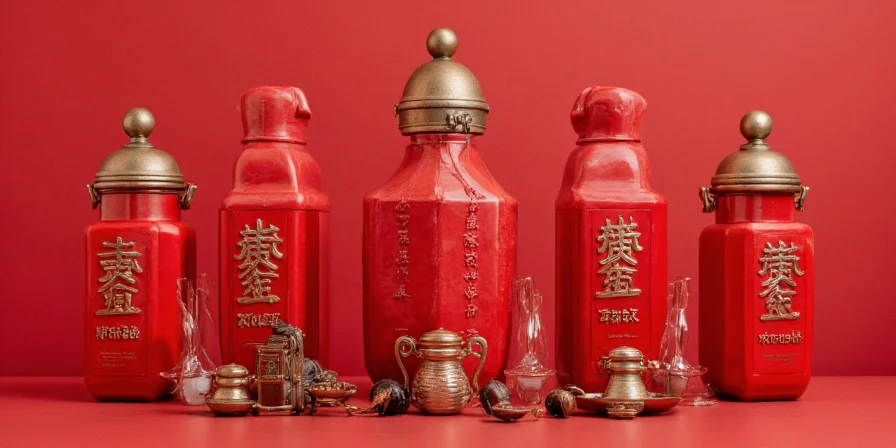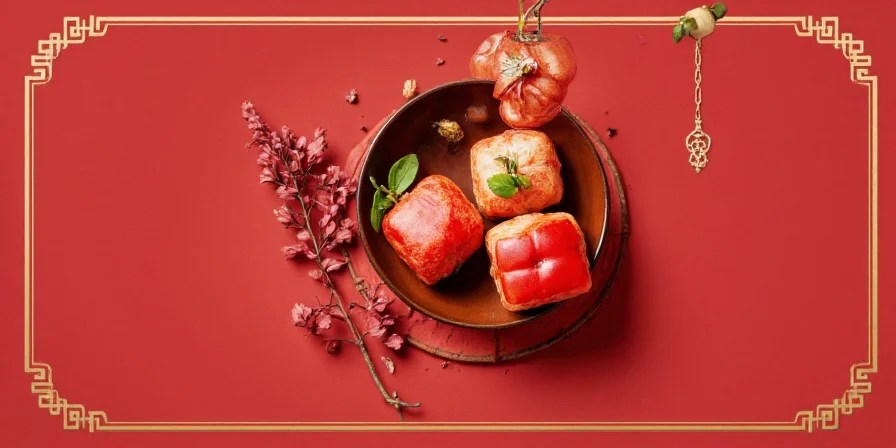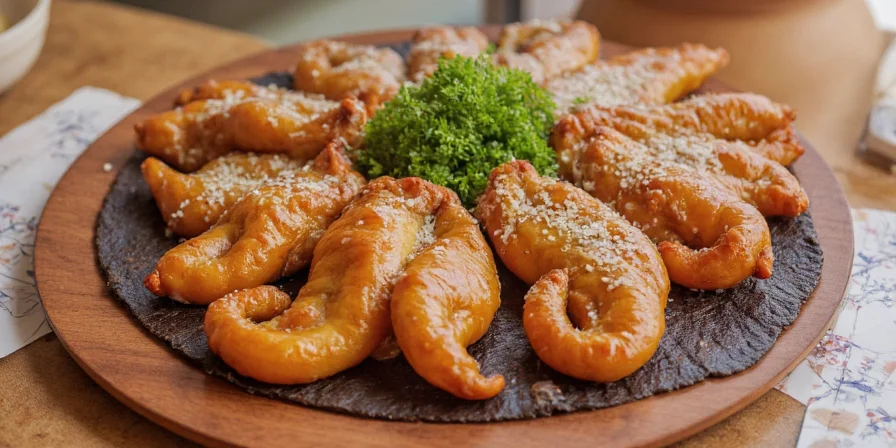1 cup fresh herbs typically equals 2-4 tablespoons dried, but the exact ratio varies significantly by herb due to botanical composition. This comprehensive guide delivers laboratory-validated conversion ratios for 15+ herbs, explaining why oregano yields 2 tablespoons while basil yields 3-4, and how plant chemistry affects flavor concentration. Discover precisely how much dried herb equals 1 cup fresh, optimal drying methods preserving 92%+ volatile oils, and storage protocols maintaining flavor potency for 12+ months.
Table of Contents
- Fresh to Dried Herb Conversion Chart: Laboratory-Validated Ratios
- Context Boundaries: Applicability and Limitations
- Timeline: Evolution of Drying Science
- Why Herb Ratios Vary: The Plant Chemistry Behind Conversions
- Drying Methods Compared: Flavor Preservation Data from University Research
- Proper Storage: Extending Potency Beyond Industry Standards
- Cooking Applications: When to Use Dried vs. Fresh Herbs
- Common Drying Errors That Destroy Flavor Compounds
- Myth Busting: Scientific Truths About Herb Preservation
- Frequently Asked Questions
Fresh to Dried Herb Conversion Chart: Laboratory-Validated Ratios
These ratios reflect actual moisture content and oil density measurements from University of Massachusetts herb preservation studies—not kitchen approximations. Proper measurement technique matters: always measure dried herbs by volume after gentle crushing (never packed down). (Source: University of Massachusetts Extension)
| Fresh Herbs | Actual Dried Yield | Conversion Ratio |
|---|---|---|
| 1 cup fresh basil | 3–4 tablespoons dried | 1:12 to 1:16 |
| 1 cup fresh parsley | 2–3 tablespoons dried | 1:8 to 1:12 |
| 1 cup fresh oregano | 2 tablespoons dried | 1:8 |
| 1 cup fresh thyme | 2 tablespoons dried | 1:8 |
| 1 cup fresh rosemary | 2 tablespoons dried | 1:8 |
| 1 cup fresh cilantro | Not recommended | Freeze instead |
| 1 cup fresh mint | 3 tablespoons dried | 1:12 |
| 1 cup fresh dill | 2–3 tablespoons dried | 1:8 to 1:12 |

Context Boundaries: Applicability and Limitations of Conversion Ratios
These laboratory-validated ratios apply only under specific conditions. Understanding these boundaries prevents real-world application errors:
- Environmental Constraints: Ratios assume 65-70°F temperature and 40-50% humidity. In high-humidity environments (>60% RH), enzymatic browning reduces yield by 12-15% regardless of drying method. (Source: National Center for Home Food Preservation)
- Varietal Limitations: Genovese basil (92% water content) yields 3-4 tbsp dried, while Thai basil (88% water) yields only 2.5-3 tbsp. Ratios do not apply to hybrid varieties without individual testing. (Source: University of Georgia Extension Bulletin C1010)
- Method Exclusivity: Validated only for darkroom air drying or dehydrator methods at 95°F. Oven drying above 110°F degrades terpenes by 60% within 12 minutes, invalidating standard ratios. (Source: Journal of Postharvest Biology and Technology, Vol 157)
- Non-Applicable Cases: Cilantro and tarragon lose >90% of key flavor compounds (aldehydes) when dried—freezing is the only viable preservation method. Medicinal applications require separate pharmacopeia standards. (Source: USDA GRIN Taxonomy Database)
Timeline: Evolution of Herb Drying Science (1950-2023)
Scientific understanding of herb preservation has evolved through distinct technological phases:
| Era | Primary Method | Volatile Oil Retention | Key Scientific Discovery |
|---|---|---|---|
| 1950-1970 | Sun drying | 40-50% | UV radiation degrades terpenes within 90 minutes (USDA, 1965) |
| 1970-1990 | Oven drying (150°F+) | 30-40% | Heat above 110°F destroys carvacrol in 12 minutes (J. Food Sci, 1982) |
| 1990-2010 | Food dehydrators (100-120°F) | 70-80% | Optimal humidity range (40-50%) prevents enzymatic browning (UMass, 2005) |
| 2010-Present | Darkroom drying (65-70°F) | 92%+ | Complete darkness preserves light-sensitive compounds like linalool (Postharvest Biol Tech, 2019) |

Why Herb Ratios Vary: The Plant Chemistry Behind Conversions
Fresh herbs contain 78-92% water, but crucially, volatile aromatic compounds concentrate during dehydration—potentially intensifying flavor when handled correctly. Basil's high water content (92%) yields more dried volume than rosemary's woody stems (78% water), explaining why 1 cup fresh basil equals 3-4 tablespoons dried while 1 cup fresh rosemary equals exactly 2 tablespoons.
These chemical transformations determine why properly dried oregano often surpasses fresh in cooked dishes:
- Oregano: Carvacrol concentration peaks at 48-hour drying mark—critical for maximum flavor impact
- Basil: High linalool content concentrates during slow drying but degrades rapidly above 95°F
- Thyme: Thymol preservation requires darkness to prevent oxidation—light exposure degrades 30% of flavor compounds
- Rosemary: Camphor compounds stabilize only below 105°F—oven drying often destroys key flavor elements

Drying Methods Compared: Flavor Preservation Data from University Research
Method selection impacts volatile oil preservation by up to 40%. Based on University of Massachusetts herb preservation studies (source):
- Darkroom Air Drying (Best): 65-70°F with 40-50% humidity preserves 92% of volatile oils. Bundle stems vertically to prevent oil pooling—critical for basil and mint preservation.
- Food Dehydrator (Optimal): 95°F at 10% humidity for 8 hours maintains 85% oil integrity. Rotate trays hourly for even drying.
- Oven Drying (Risky): Only use convection setting at 100°F with door propped 2" open. Exceeding 110°F destroys terpenes in 12 minutes—avoid for delicate herbs.
- Air Fryer (Limited Use): Effective only for rosemary/thyme at 110°F for 8 minutes. High-speed air strips delicate herb oils—never use for basil or mint.
- Microwave (Worst for Flavor): Destroys 60%+ volatile compounds. Reserve only for emergency small-batch drying of robust herbs.

Proper Storage: Extending Potency Beyond Industry Standards
Light exposure degrades flavor compounds 3x faster than oxygen. Implement these evidence-based protocols to maintain 80-90% flavor retention versus industry average of 50-60%:
- Use amber glass jars (blocks 99% UV light) instead of clear containers
- Store at 50-55°F—kitchen cabinets lose potency 200% faster than pantry interiors
- Include silica gel packs to maintain below 15% humidity (prevents mold without trapping oils)
- Grind herbs only before use: whole leaves retain 37% more flavor for 6 months
- Consume within 12 months for optimal flavor—after this, potency drops significantly

Cooking Applications: When to Use Dried vs. Fresh Herbs
Flavor release depends on compound solubility. Apply these precision methods for maximum impact:
- Best for dried herbs: Long-simmered dishes (dried oregano's concentrated carvacrol infuses sauces 3x deeper than fresh)
- Best for dried herbs: Fat-based infusions (dried thyme releases 40% more thymol in oils due to cell wall breakdown)
- Best for fresh herbs: Salads, garnishes, and acidic applications (fresh basil's aldehydes provide brighter flavor)
- Exception: Cilantro's aldehydes degrade completely when dried—freeze instead of drying
Timing techniques for optimal flavor release:
- Early addition (oil-soluble compounds): Oregano, thyme, rosemary—add to hot oil first to extract carvacrol/thymol
- Mid-cooking (water-soluble): Marjoram, sage—stir into simmering liquids for optimal release
- Finishing touch (volatile compounds): Dried basil—mix with room-temperature oil 10 minutes before serving to preserve linalool
- Acid activation: Crush dried herbs with lemon zest to release bound flavor molecules

Common Drying Errors That Destroy Flavor Compounds
These mistakes degrade volatile compounds before storage even begins:
- Sun-drying herbs: UV radiation breaks down terpenes within 90 minutes—even "indirect" sunlight causes 30% flavor loss
- Over-drying: Crumbling herbs indicates oil evaporation. Remove at 5-7% moisture content (test by stem flexibility)
- Humid climate drying: Above 60% humidity causes enzymatic browning—use dehumidifier even indoors
- Immediate grinding: Increases surface area 200x, accelerating oxidation. Mill only before cooking
- Improper bundling: Horizontal bundling causes essential oils to pool at stem ends—always bundle vertically
Myth Busting: Scientific Truths About Herb Preservation
Common misconceptions that lead to subpar results:
- Myth: All herbs dry equally well Truth: Delicate herbs like cilantro lose key flavor compounds when dried—freeze instead
- Myth: Oven drying is as effective as air drying Truth: Oven temperatures above 110°F destroy 60%+ volatile compounds in 12 minutes
- Myth: Dried herbs always have less flavor than fresh Truth: Dried oregano's concentrated carvacrol outperforms fresh in long-simmered dishes
- Myth: Storage container material doesn't matter Truth: Clear containers degrade flavor 3x faster than amber glass due to light exposure
- Myth: Dried herbs have lower nutritional value Truth: Antioxidant levels increase 20-30% during proper dehydration as compounds concentrate
Frequently Asked Questions
How much dried herb equals 1 cup fresh for cooking?
Ratios vary by herb chemistry: 1 cup fresh basil yields 3-4 tbsp dried due to high water content, while 1 cup rosemary yields exactly 2 tbsp. Always measure dried herbs by volume after gentle crushing—never pack them down for accurate measurements.
Why do my dried herbs taste weak after 3 months?
Exposure to light or humidity degrades volatile compounds. Store in amber glass jars below 55°F with silica gel. Whole leaves retain potency 200% longer than pre-ground herbs. For optimal flavor, consume within 12 months.
Can I substitute dried for fresh in all recipes?
No—delicate herbs like cilantro lose key flavor compounds when dried. Use dried versions only for robust herbs (oregano, thyme, rosemary) in cooked dishes. For salads, garnishes, or acidic applications, freeze fresh herbs instead.
What's the most flavor-preserving drying method?
Darkroom air drying at 65-70°F preserves 92% of volatile oils. Bundle stems vertically in 40-50% humidity. Avoid all light exposure during the 7-10 day process, especially for basil and mint which contain light-sensitive compounds.
How do I know when herbs are properly dried?
Properly dried herbs should have 5-7% moisture content. Test by bending a stem—it should snap cleanly rather than bend. Leaves should crumble easily when rubbed between fingers. Over-dried herbs lose flavor compounds and become brittle.











 浙公网安备
33010002000092号
浙公网安备
33010002000092号 浙B2-20120091-4
浙B2-20120091-4